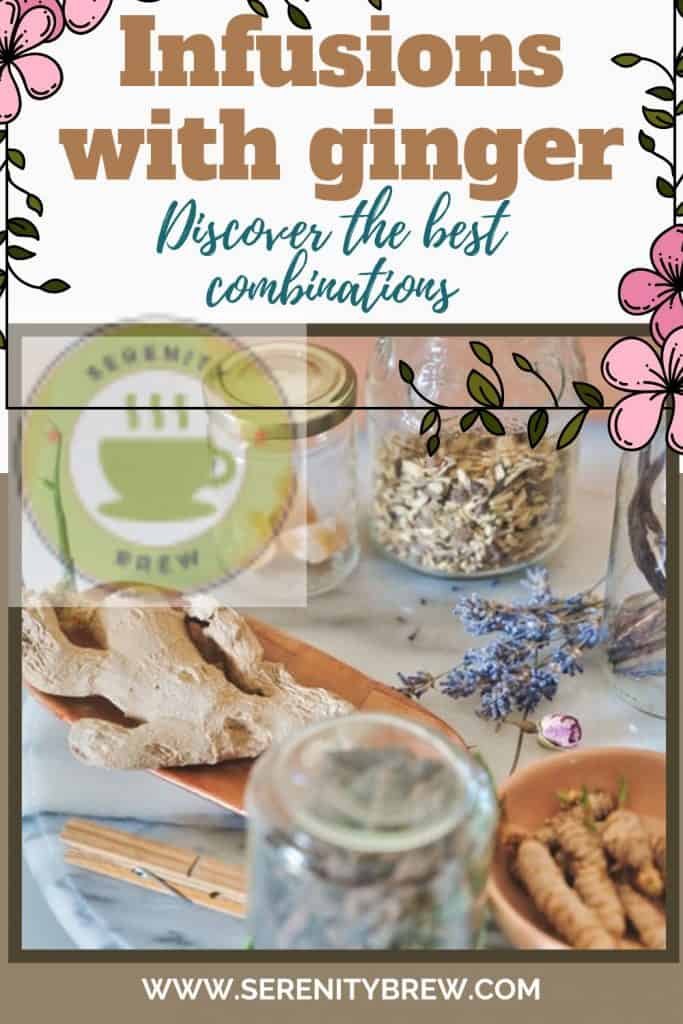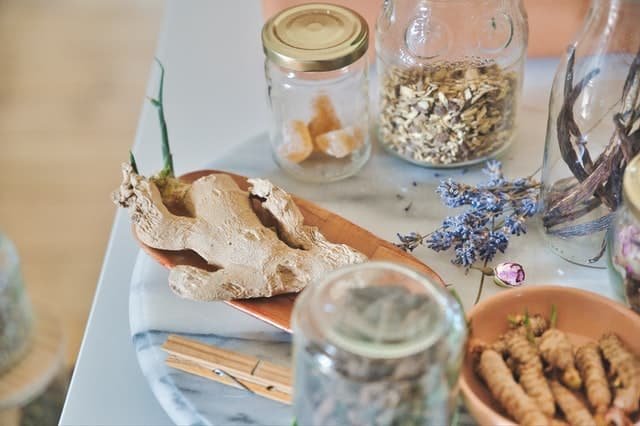
Ginger is one of the best known spices in the world. Its spicy flavor and fragrant aroma go well with a multitude of teas and it is often found as an ingredient in infusion mixes.
Adding ginger to your cup can turn a boring infusion into something surprising, and with very positive effects on your well-being. Join us to discover it.
What is ginger?
Ginger is the underground stem of Zingiber officinale, a plant native to the rain forests of the Indian subcontinent. The main producers of ginger are India, China, Indonesia and Nigeria.
Ginger was one of the first spices to arrive in Europe, from the hands of Arab traders to those of the Greeks and Romans.
Ginger is a common ingredient in many Asian cuisines. It is practically ubiquitous in Indian cuisine, where it is easy to find it as an enhancing ingredient in sauces for meat, seafood, fish or vegetarian dishes.
Ginger is a medicinal plant and has an important role in Ayurvedic medicine, the traditional Indian medicine.
Ginger root is often used to make herbal teas. Both fresh and dried, it can be infused in hot water to produce an aromatic and stimulating drink with a powerful, spicy and peppery flavour.
Combinations of infusions with ginger
Pure ginger
Although it is easy to find ginger infusions in bags in your supermarket, honestly, preparing it from fresh ginger is easy, fast and, above all, tastier. Dried ginger loses much of the original potency of the plant.
Fresh ginger is easy to find, and it keeps well in the fridge. Once peeled, its juicy, yellowish flesh can be mashed or cut before being added to hot water.
It is difficult to suggest an amount to use. The flavor of ginger is powerful and has as many lovers as detractors. We usually put about three one-inch slices per cup.
Use very hot water and let it all sit for about 3 minutes.
Green tea with ginger
The fresh flavor of green tea combines wonderfully with the spiciness of ginger.
There are two basic methods of making green tea, Chinese and Japanese. While the Chinese stop the oxidation of the tea leaves by roasting them in a kind of wok, the Japanese do it by steaming.
The flavors of Chinese teas tend to be more roasty and earthy, while Japanese teas tend to be more grassy. You can dare to combine ginger with green teas of any origin.
It is possible to find commercial preparations of ginger with green tea, but you can dare to make the combination perfectly to your liking. In this case, try to avoid green teas with a more delicate flavor and, above all, do not go overboard with ginger or the nuances of the tea will be lost.
Ginger with lemon
The infusion of ginger with lemon is a classic for winters with colds.
The lemon nuances the spiciness of the ginger and makes it a smoother drink suitable for more sensitive palates. Citrus generally go well with ginger, you can substitute lemon with oranges or even grapefruit.
The winter version is, without a doubt, the best known of this infusion and contains honey as a sweetener. It is a very effective remedy to soothe those throats irritated by coughing and to clear the airways.
The cold version of this concoction may not be as popular, but served over ice, the combination of citrus fruits and ginger is tremendously refreshing.
Chai tea
Chai tea is a mixture of various spices and black tea. Each chai tea recipe incorporates its own selection of spices, but ginger is often a common element.
Chai tea was born in India as an adaptation to local tastes of the English custom of drinking tea.
Indians who love intense flavors gave their tea a spicy touch with pepper and ginger.
Ginger with turmeric
Turmeric is another famous Indian species, in fact, it belongs to the same family as ginger. Its consumption has recently become popular beyond the kitchen for its anti-inflammatory, anti-arthritic and antioxidant properties.
Its health properties aside, turmeric adds its woody touches to the ginger infusion and its famously powerful yellow color.
Ginger and health
The medicinal use of ginger dates back to ancient times, the Romans used it to heal tumors and body defects, the Persians gave it a more witty use and considered it a powerful aphrodisiac.
Ginger has vasodilator effects that open up blood vessels and allow blood to flow more easily. Ginger has been used in various traditional medicines to treat problems related to digestion, flatulence, fever, nausea and vomiting. At present, it has been the subject of numerous scientific studies to determine its properties.
Ginger is commonly used to relieve nausea and dizziness. Studies like the one looked at its effectiveness in relieving motion sickness, morning sickness, and chemotherapy-induced nausea. Ginger is also effective and safe in the treatment of nausea due to pregnancy, although questions remain about the maximum dosages allowed and its interactions. If you are pregnant and looking for a remedy for nausea, remember that there is no one better than your doctor to advise you on remedies.
On the other hand, ginger has traditionally been used to combat the effects of various inflammation-related conditions. In a study says, positive effects of ginger in the treatment and reduction of pain from osteoarthritis were detected. The effects of ginger on relieving menstrual cramps have also been studied.
Get creative with ginger

Fresh ginger is an ingredient that will cost you little to find in your favorite greengrocer. Adding a little to your favorite brew can give it an unexpected and tasty twist.
Ginger goes great with green or even black tea and can be the perfect pairing with a little lemon or orange.
The comforting properties of ginger are legendary, add a few slices to your cup and feel your body warm up and your palate enjoy the stimulating spicy flavor of this wonderful plant.
